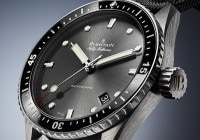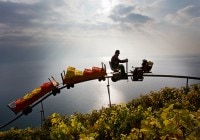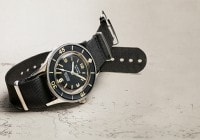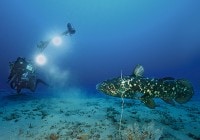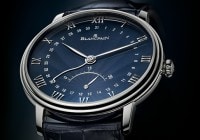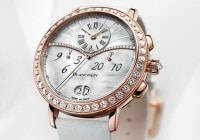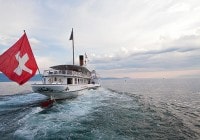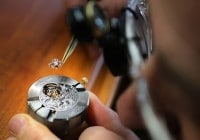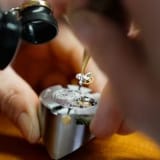
Search in Issues
Chapters
List of parts
Chapter 9
Where Blancpain’s TOURBILLONS AND CARROUSELS come to life
In this workshop, watchmakers with skilled and nimble fingers craft the most iconic horological complications.
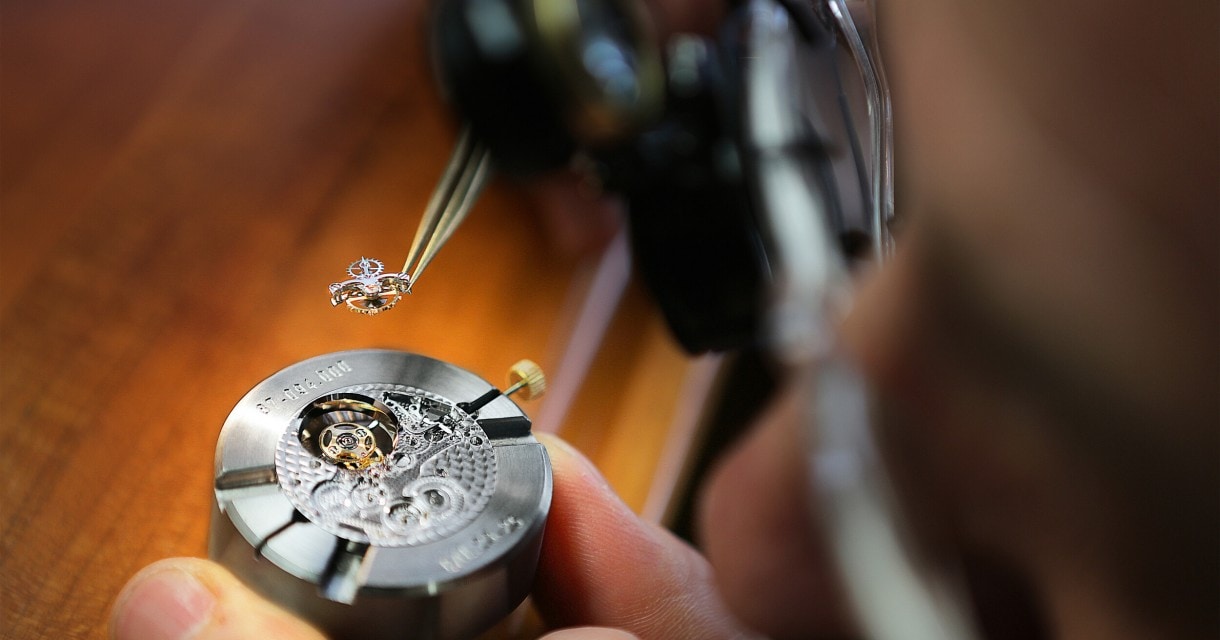
Blancpain has long excelled in the art of constructing these two fascinating devices—THE TOURBILLON AND THE CARROUSEL—but that does not rule out innovation.
The workshops for tourbillons and carrousels in the manufacturing site at Le Brassus offer a soothing view of the surrounding nature, but they also express a large part of Blancpain’s legitimacy and individuality as a manufacturer of high-grade timepieces. Judge for yourself: in 1989, Blancpain introduced its first tourbillon watch—a special, extremely slim construction with an off-center balance and a going time of eight days. Some 19 years later, the manufacturing company again broke new ground in regulatory systems with the first one-minute flying carrousel in a wristwatch. In 2013, Blancpain combined these two complications to create the unprecedented Le Brassus Tourbillon Carrousel, which gives an ideal opportunity for us to meet the relevant experts in the workshops where it is made.
Blancpain has long excelled in the art of constructing these two fascinating devices—the tourbillon and the carrousel—but that does not rule out innovation. This was doubly demonstrated this year when the company made its mark in complicated watchmaking with two outstanding pieces in the Le Brassus Collection: a carrousel minute-repeater with an instant-restart chronograph and a tourbillon carrousel—two combinations that have never been done before. The fact is that Blancpain is a consummate master in mechanical watchmaking in general, and in bringing solutions to the balance and escapement in particular, whether with a tourbillon or a carrousel.
Blancpain’s first tourbillon dates back to the 1989 manually wound caliber 23. Although such a complication has become little more than demonstration of skill by many watchmakers today, in the 1980s few were capable of its construction. But Blancpain did not rest on its laurels. The first tourbillon movement was followed by the self-winding caliber 25 that was to become the basis of a number of tourbillon-regulated complications. The tourbillon was first fitted with a large date indication (caliber 6925), then with the days as well (caliber 3725), followed by a second time zone (caliber 5025), a perpetual calendar (caliber 5625) and finally a large date with the power reserve shown on the winding rotor (caliber 4225). The carrousel first appeared in the 2008 catalogue as the one-minute flying carrousel—a technical achievement and another world first for Blancpain.
IN THE DAYS BEFORE JEWELS
But what lies behind these names, tourbillon and carrousel? Mustapha Ahouani, in charge of Blancpain’s complications workshop describes them as follows: “Both systems have the same purpose of cancelling out the effects on gravity on watch mechanisms. But you need to put them in their historical context in 1801, when Abraham-Louis Breguet filed his patent for a tourbillon. The fob watches at the time were inaccurate for a number of reasons, especially friction, because watchmakers had not yet adopted jewel bearings. Furthermore, manufacturing techniques were not as sophisticated as they are today which meant that the gear trains were far from perfect. Since the watches were worn vertically, the holes in which the wheels pivoted tended to go out of shape, which affected the rate of the watch. It was to overcome these problems that Abraham-Louis Breguet devised the tourbillon.”
In practice, the tourbillon comes as a mobile carriage in which the balance and escapement assembly is fitted, with the balance usually in the center. The escape-wheel pinion rotates around the fixed fourth wheel of the train. As a reminder, in watchmaking terms the es- capement is a mechanism between the energy source from the mainspring, transmitted by the going train, and the regulating organ consisting of the balance-wheel and spring. The function of the escapement is to maintain the oscillations of the balance, which determines the divisions of time. The rotation of the tourbillon carriage, usually once a minute, averages out the rate variations when the watch is worn in the usual upright position in a fob pocket.
A MATTER OF PRESTIGE
“About a century later, the Danish watchmaker Bahne Bonniksen took up Breguet’s task of cancelling out the effects of gravity,” Mustapha Ahouani continues. “Since there was no point in doing the same as his predecessor, he developed the carrousel which was
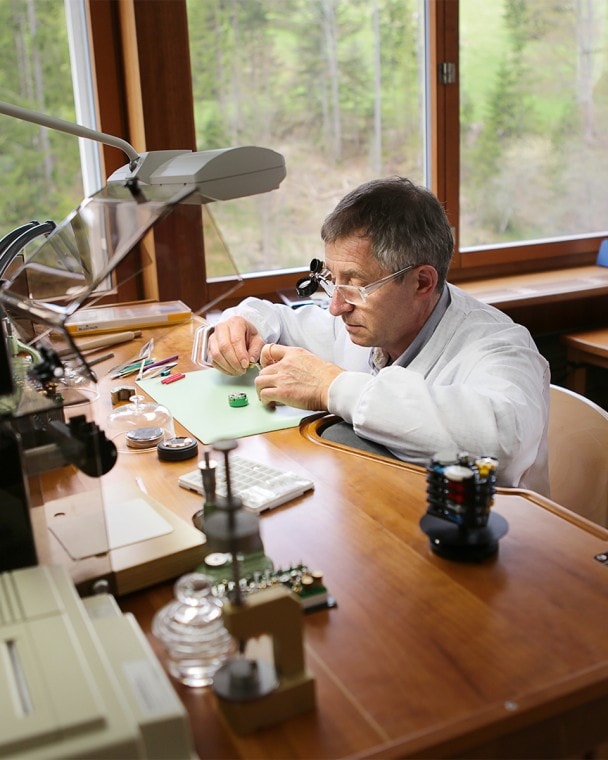
Serenity and concentration are the watchwords for the master-watchmaker in the tourbillon and carrousel workshop.
This is where watchmaking EXPERIENCE AND MANUAL DEXTERITY come into play because the tourbillon carriage encloses the heart of the watch.
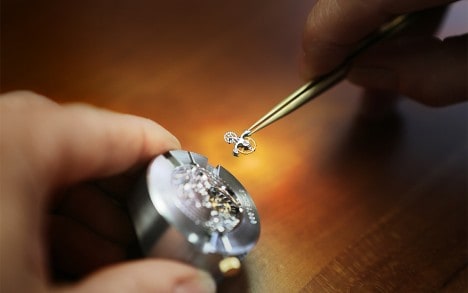
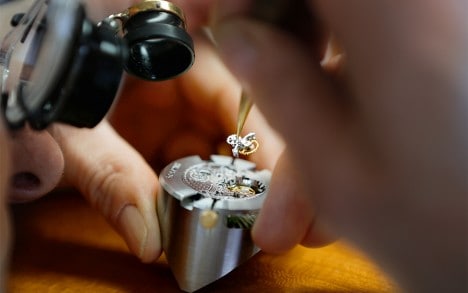
“The tourbillon can then come to life. The carriage stirs in the movement, which is a VERY SATISFYING MOMENT.”
patented in 1892. Bonniksen’s aim was a device that performed better, cost less and was easier to adjust. However, it didn’t turn out like that. That doesn’t mean to say that his invention was not useful. The main difference between the two systems is in the transmission. In the tourbillon, the going train is more conventional.”
Like the tourbillon, the carrousel carries the escapement and balance in a carriage rotating about its axis. The carrousel has two distinct but complementary going trains departing from the third wheel. One train goes to the escapement and the other rotates the carriage via an intermediate wheel—once a minute in the case of Blancpain’s carrousel. It is called the carrousel because the balance and its cock are fixed on a rotating plate. The carrousel design is more complex to construct, necessitating a large number of parts that are theoretically more difficult to balance properly. In the end, even though the carrousel provides better force transmission with less loss of amplitude as the energy decreases, and therefore a more stable rate, it didn’t have nearly the same success as its elder sibling, the tourbillon. For long it was considered a “bastard” device, without the prestige of Abraham-Louis Breguet’s invention, and the carrousel was largely forgotten.
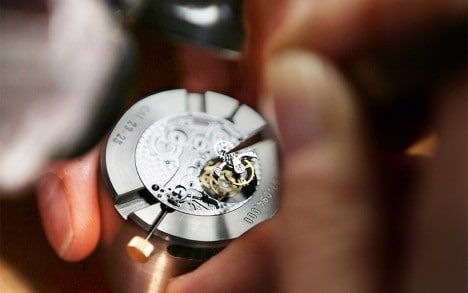
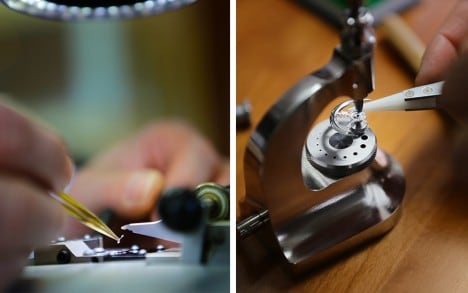
MIXING DEVICES
Blancpain decided to put things to rights with the same innovative spirit that inspired the construction of its tourbillon. With the latter’s presentation in 1989, the company found itself on the market with the slimmest tourbillon ever made and which had an impressive eight days power reserve. To achieve this, it took some liberties with the conventional Breguet design. The Blancpain tourbillon thus has an off-center balance, which is usually a feature of the carrousel. Conversely, when the watchmaker had completed his carrousel with a power reserve of 100 hours, it also decided to mix the systems by placing the balance in the center of the one-minute rotating carriage, which is usually associated with the tourbillon.
All that was left was for Blancpain to bring these two complications together to display their full mechanical force. This is now reality with the Le Brassus Tourbillon Carrousel model (to be described in the next issue), with a flying tourbillon at 12 o’clock and a flying carrousel at 6 o’clock and fitted with dates at 3 o’clock and a power-reserve indicator on the back. As Blancpain puts it: “The eye is immediately drawn to the differences as well as the similarities of the two systems as well as their attractive rotating action. Each independent carriage is connected through a differential, which delivers their average rate to the hands on the dial. Both barrels are wound together by the crown to make this watch as precise as possible and to give it seven days of power reserve.”
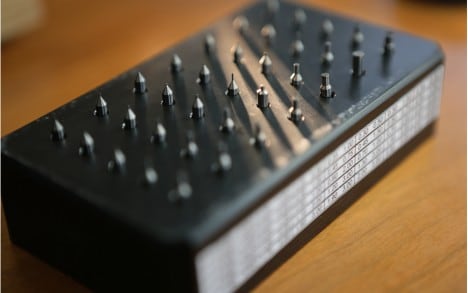
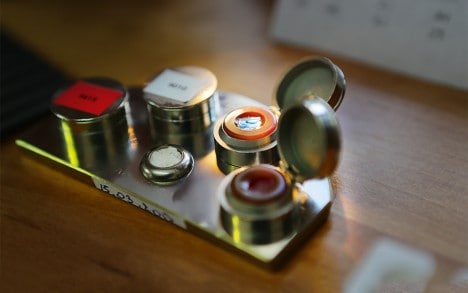
THE FLOATING TOURBILLON
So much for the theory, but how does a tourbillon actually come to life in the manufacturing company’s workshops at Le Brassus? “Before discussing the as- sembly of a Blancpain tourbillon, its worth considering its features,” explains Gérard Marguet, 55, who in 1988 joined the Frédéric Piguet company in Le Sentier, which is now part of the Manufacture Blancpain. “It’s a one-minute flying tourbillon that also shows the seconds and it has a power reserve of seven to eight days. In the absence of a tourbillon bridge, the carriage is free and attractive to look at. It is only pivoted underneath on seven ceramic ball bearings. It other words, it really looks as if it’s floating in the air. Another feature of the Blancpain tourbillon is its small size, fitted into the 4.85 mm high self-winding caliber 25 movement that accommodates the range of tourbillon models. In some aspects it’s a little temperamental and could need two or three days of running in to settle down after assembly. This usally allows us to continue putting together the other parts of the watch before going back to the real adjustment of the tourbillon.”
In the complications workshops at Le Brassus, Gérard Marguet works with Christophe Lamy-Chappuis, 44, who in 1989 also joined Frédéric Piguet. Together they are the project managers for all of Blancpain’s tourbillons of every variety according to production needs. It starts with the arrival of the movements in kits and the sorting out of components, some of which have already been semi-assembled with pegs and jewels driven in at the Manufacture Blancpain in Le Sentier. Then comes the assembly proper, which starts with the winding and setting mechanism. “Next we fit the train and assemble the barrel and its bridge, checking heights and oiling the pivots,” Christophe explains. “At this point the assembly of the carriage can begin. This is the longest and most delicate job.”
ASSEMBLING TWICE
This is where watchmaking experience and manual dexterity come into play because the tourbillon carriage encloses the heart of the watch—its balance and escapement. Gérard adds: “The components from Blancpain in Le Sentier are machined to within a range of maximum and minimum tolerances. That means adjustments are necessary, especially of the pallets. Then some parts are decorated or mirror polished like
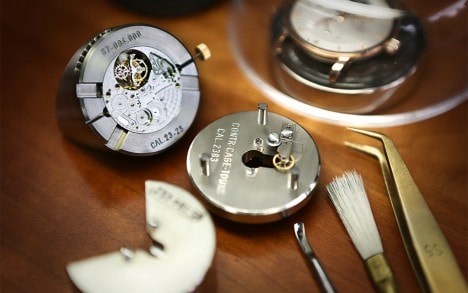
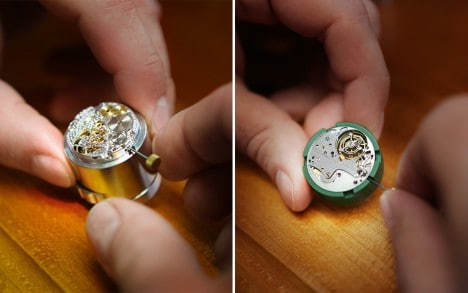
When the complication comes to life: a moment of intense emotion for watchmakers.
Their track record of EXCEPTIONAL CAPABILITIES enables them to face the advent of silicium with few worries.
the lower bridge. Since this part has to be handled about ten times we cannot make a mistake. The original finish must remain untouched. In this respect the customer’s judgment is final. If he notices any error due to faulty assembly, Blancpain’s reputation suffers. And we can’t allow that.”
The two watchmakers start by fitting the escapement and then the balance-wheel and spring. When the spring is centered and true in the flat—an operation called spring-checking—the device becomes functional. Now everything can be verified in the escapement-making process: the functions and the depth of the pallets to manage the strength of the balance. Then the heights of the mobile parts must be adjusted, notably the escape-wheel, pallet lever and balance. Everything is measured, adjusted, retouched and corrected if necessary, by eye for some components. However, at this stage it is only a preliminary assembly; complex movements are always first assembled “in the grey” then taken apart and cleaned before being assembled again. In other words, the tourbillon is completely disassembled to be washed and treated with epilame to prevent the oils from spreading and to ensure the long life of the movement. “Washing is essential,” emphasizes Gérard. “Because we work twice on the tourbillon carriage and we have to handle these components and modify them sometimes, any slight contamination, which might be invisible, could cause problems with the adjustment of the movement. You have to be absolutely exacting when it comes to complex pieces.”
“THE TOURBILLON CAN COME TO LIFE”
Once assembled, lubricated and functionally passed, the tourbillon has to undergo a battery of tests, but with its carriage locked, as if it were a conventional movement. “We assess the balance rate and amplitude in the six standard positions,” Christophe explains. “We also take measurements on an acoustic Witschi machine for the escapement and the dynamic poising of the balance. These operations should enable us to set the rate of the tourbillon definitively by using the four adjustment screws of the balance to increase or reduce its inertia. Since these adjustments are also done by eye, we can’t afford mistakes here either.”
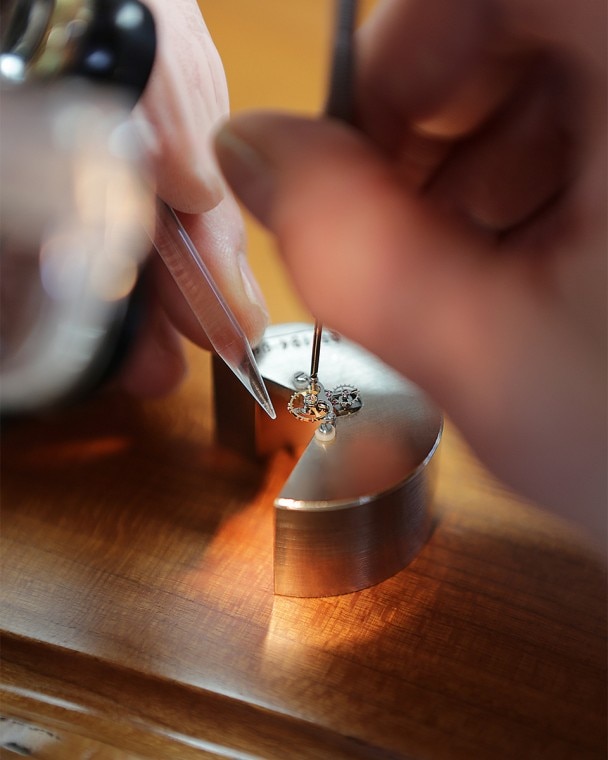
“There’s one thing you must never forget about our job: WE WORK AS A TEAM and the first link of the chain is as important as the last.”
Finally, all that remains is to fit the tourbillon in its diamond-polished housing inside the movement. The pinion of the seconds wheel holds the carriage fixed into a 0.3-mm screw-thread. “The tourbillon canthen come to life, which is a very satisfying moment,” Gérard emphasizes with a wide smile. Then all that is left is to check the final rate in the six positions and allow for a running-in period for the movement to stabilize. The different variations are added later, but these are much easier operations. We have to pay special attention to lubricating the points of friction. The whole thing is then validated in Le Sentier during the seven or eight days of what we call the certification process.”
Gérard and Christophe are also in charge of the Blancpain carrousels, which are assembled according to the same procedure. As Christophe explains, “the job is very similar but as there are more components, it takes us a little longer. Having said that, the carrousel is assembled within a larger space; the carriage is higher, which makes our task easier compared to the extra-thin tourbillon. As soon as you get into miniaturization, problems come up both in assembly and adjustment, and the process becomes more complex. The adjustment of the carrousel is famously different because it has to be done the old-fashioned way by checking the daily rate against a master timepiece. The carrousel itself, which is noisier than the tourbillon, interferes with acoustic measurements.”
Contrary to what others might think, watch mechanisms are constantly evolving at Blancpain—even the most complicated. The next phase for the tourbillon is the introduction of silicium parts, first the balance-spring then the lever pallets and the escape-wheel, especially since the manufacturing company is entirely capable of the technology. “We have in fact done tests on several calibers but not yet fully on the tourbillon,” Mustapha Ahouani points out. “Nevertheless, the caliber 2322 Tourbillon Carrousel is already fitted with two silicium balance-springs. This is without doubt where the future lies because this material provides greater rate stability and, what’s more, it’s non-magnetic. So far as we’re concerned, the progressive use of silicium in our movements is a step in the development and improvement of our calibers, and our watchmakers are ready to take up the challenge.”
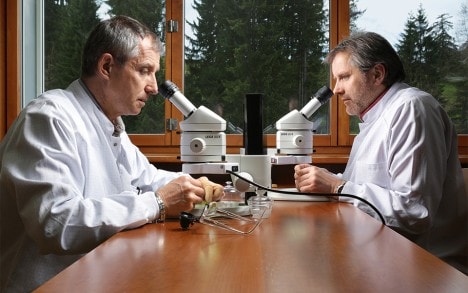

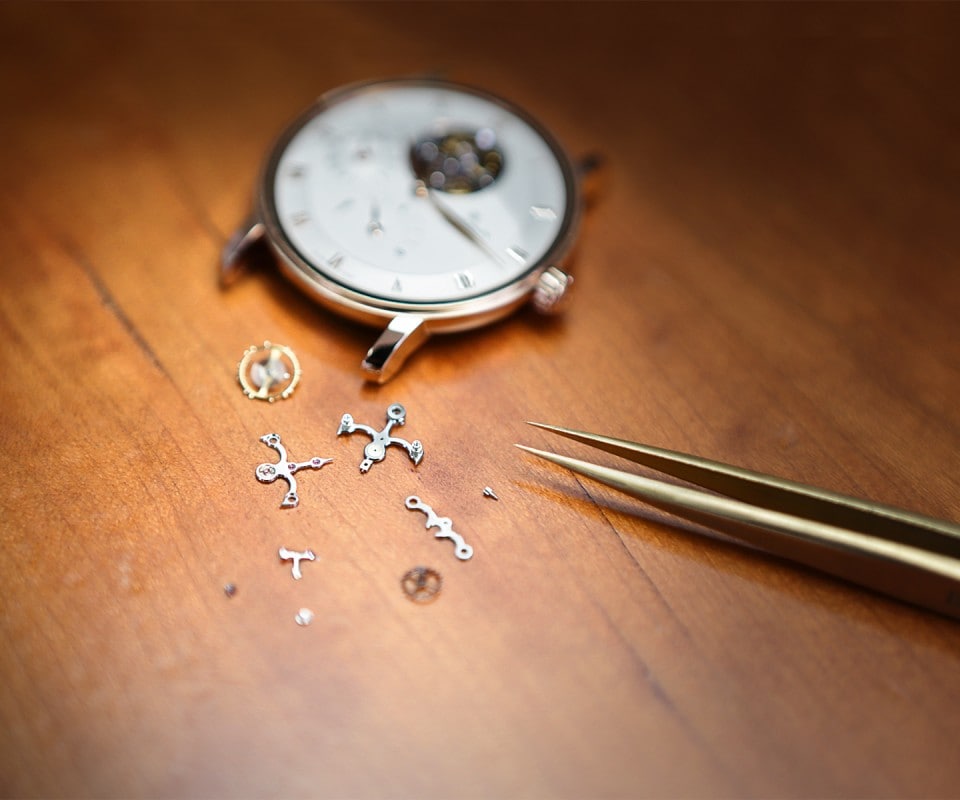
TELLING THE STORY OF WATCHMAKING
For their part, Gérard and Christophe are quite aware of the demands imposed by silicium, which is more difficult to handle. But their track record of exceptional capabilities enables them to face this future with few worries. “A complications workshop is constantly on the move and changing,” Christophe declares. “That means we’re never bored. In the end, it’s the dream of every watchmaker to be able to work on pieces of this complexity. It’s not always easy but there’s immense satisfaction when we deliver these watches.” Gérard agrees: “The customer not only acquires a watch but also the expertise that goes into it and a product that tells him the story of watchmaking. And although the manufacturing methods have changed considerably since Abraham-Louis Breguet’s time, we are the direct successors because we follow the same principles of quality watchmaking.”
Monitoring procedures, redoing inspections, working meticulously with esteem for the previous job, concern for workmanship, and above all the calm attitude that ensures sure action—these are the qualities that the two watchmakers apply to the description of their work. “We are at the end of the value-added chain of high-value watches,” concludes Gérard. “Of course, we have to be aware of that and apply our experience to this last watchmaking link, because there’s one thing you must never forget about our job: we work as a team and the first link of the chain is as important as the last.” There’s no doubt that in the quiet of the Vallée de Joux, the Blancpain complications workshops have found an ideal environment in which to nurture exceptional watchmaking.
|
PUBLISHER PROJECT MANAGEMENT EDITORS IN CHIEF CONTRIBUTORS TO THIS ISSUE TRANSLATION |
CONCEPT, GRAPHIC DESIGN, REALISATION ART DIRECTION PHOTOLITHOGRAPHY PHOTOGRAPHERS Release date: August 2013
|

Other issues
Don't miss the latest issue
Sign Up for New Releases

